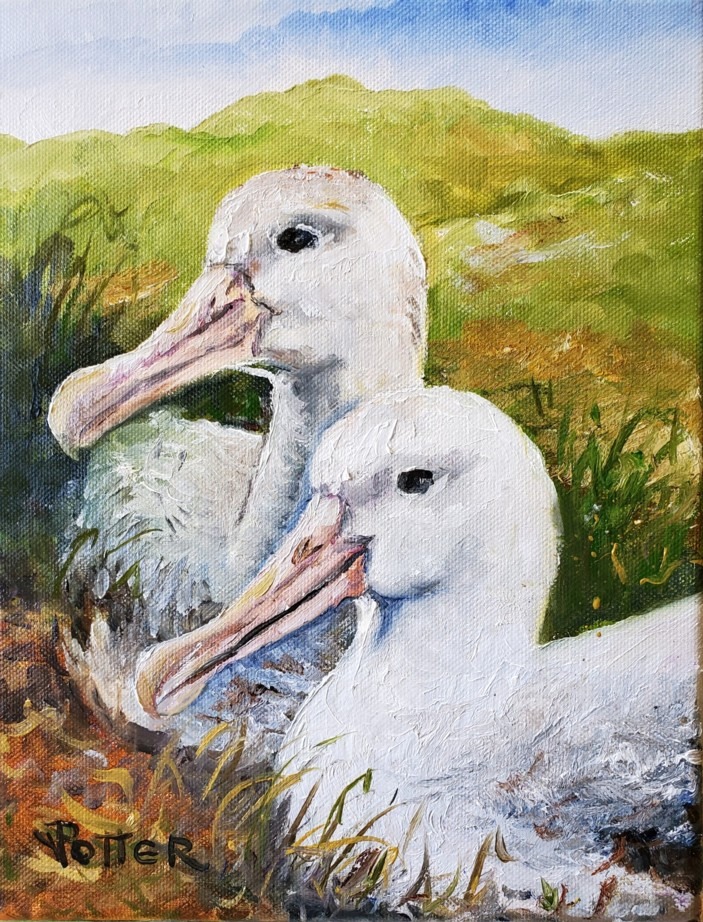
Tristan Albatross pair on Gough Island, artwork by Virginia Potter Vredeveld from a photograph by Michelle Risi
Susana Requena (RSPB Centre for Conservation Science, Royal Society for the Protection of Birds, Sandy, UK) and colleagues have published in the journal Animal Conservation on identifying marine areas used by seabird and seal predators in the South Atlantic. Five ACAP-listed seabirds were tracked: Atlantic Yellow-nosed Thalassarche chlororhynchos, Sooty Phoebetria fusca and Tristan Diomedea dabbenena Albatrosses and Grey Procellaria cinerea and Spectacled P. conspicillata Petrels.
The paper’s abstract follows:
“Remote oceanic islands harbour unique biodiversity, especially of species that rely on the marine trophic resources around their breeding islands. Identifying marine areas used by such species is essential to manage and limit processes that threaten these species. The Tristan da Cunha territory in the South Atlantic Ocean hosts several endemic and globally threatened seabirds, and pinnipeds; how they use the waters surrounding the islands must be considered when planning commercial activities. To inform marine management in the Tristan da Cunha Exclusive Economic Zone (EEZ), we identified statistically significant areas of concentrated activity by collating animal tracking data from nine seabirds and one marine mammal. We first calculated the time that breeding adults of the tracked species spent in 10 × 10 km cells within the EEZ, for each of four seasons to account for temporal variability in space use. By applying a spatial aggregation statistic over these grids for each season, we detected areas that are used more than expected by chance. Most of the activity hotspots were either within 100 km of breeding colonies or were associated with seamounts, being spatially constant across several seasons. Our simple and effective approach highlights important areas for pelagic biodiversity that will benefit conservation planning and marine management strategies.”
With thanks to Janine Dunlop, Niven Librarian, FitzPatrick Institute, University of Cape Town.
Reference:
Requena, S., Oppel, S., Bond, A.L., Hall, A., Cleeland, J., Crawford, R.J.M., Davies, D., Dilley, B.J., Makhado, A., Ratcliffe, N., Reid, T.A., Ronconi, R.A., Schofield, A., Steinfurth, A., Wege, M., Bester, M.[N.] & Ryan, P.G. 2020. Marine hotspots of activity inform protection of a threatened community of pelagic species in a large oceanic jurisdiction. Animal Conservation doi.org/10.1111/acv.12572.

 English
English  Français
Français  Español
Español